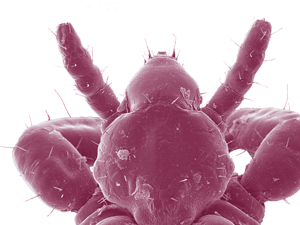Parasites in Focus
The thought of a tiny six legged insect, with googly eyes, waving antennae and gripping claws, scampering around your scalp is enough to make anyone's head feel a little itchy. Introducing Pediculus capitis, the humble head louse (plural: lice). These little critters have a very acquired taste, Human. That's right head lice affect no other animal accept for us, aren't we lucky?
A louse lives its entire life (a whole month) on the head of their unsuspecting host. It likes to hang out towards the back of your head and above or behind your ears. Baby lice (nymphs) and adults like slurping up your blood on the surface of your scalp where they'll fully engorge themselves day or night.
Female lice are egg laying machines and can lay 6-8 pale coloured oval shaped eggs (nits) a day and may lay 300 eggs within their lifespan. The eggs are glued to the base of the hair shaft and grow out with the hair. If you want to know how long you've had lice inhabiting your lovely locks you can tell by how far away the eggs are found from your scalp. Most eggs hatch within 7 to 10 days but some can remain unhatched for up to 3 to 4 weeks.
You can learn about these charming blood suckers and other unwanted guests at the Parasites in Focus exhibition now showing at the Museum's Botanic Gardens Site until 23 February 2011.
Image: Head louse, Pediculus capitis, image from "Parasites in Focus", copyright 2007.

